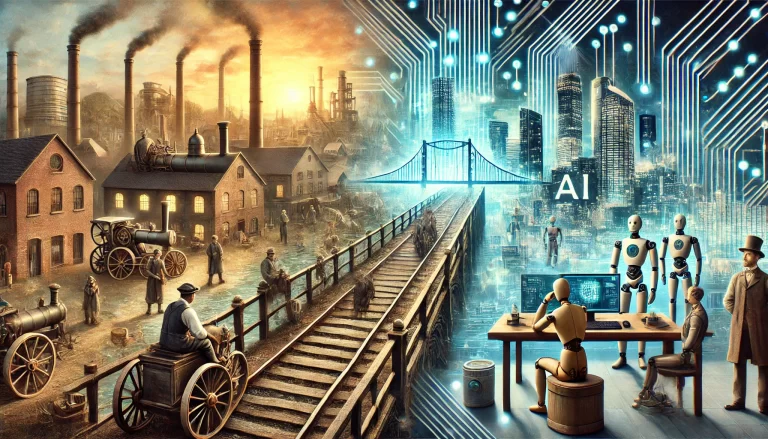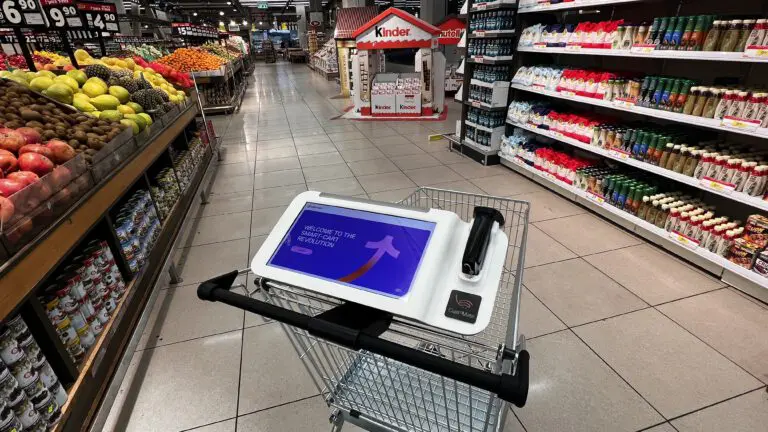The early 1800s heralded the Industrial Revolution in the US, a transformative era driven by technological progress. The introduction of new machinery and manufacturing techniques reshaped the economic terrain, enhancing production efficiency while diminishing the need for manual labor in certain domains. Consequently, this shift resulted in job loss.
Today we are seeing a similar scenario, with advancements in automation holding the promise of revolutionizing the workforce in ways that enhance productivity. However, alongside these technological strides, the familiar concern over job displacement is resurfacing among workers. While short-term job displacement may occur in the period of transition, ultimately, these advancements will not fully replace humans but redefine their roles in the workforce.
Finding Meaningful Work
The COVID-19 pandemic caused one of the most severe job crises to unfold, prompting nearly 23 million US-based employees to lose their jobs. The Pew Research Center found that during this time, most seriously considered changing fields or occupations in a desire for more purpose-driven work. Today, that desire for purpose persists within 70% of individuals in the workplace, pressuring employers to address this demand or risk losing talent to organizations that do.
This was highlighted last year when over 34 million Americans voluntarily resigned from their jobs, a movement some refer to as the Great Reshuffle. Companies are now contending with unprecedented challenges in securing a sufficient workforce. Meanwhile, Americans persist in seeking and discovering better opportunities that offer them a sense of purpose and good work-life balance
Service Industries are most likely to face this significant upheaval, as evidenced by the departure of 8.6 million workers from nursing, food service, office support, and production roles. AI can mitigate the impact of this upheaval through its integration or complete takeover of mundane tasks, transforming the previously unfavorable, and seemingly rejected positions into desirable work.
The Intersection of AI
While the evolution of jobs due to advancements in AI is readily apparent in fields such as STEM, creative endeavors, business, and law, this transformation also extends to healthcare, retail, and more, where the willingness to work is on the decline due to the amount of workplace stress or ‘lack of purpose’. By 2030, activities that account for up to 30% of hours currently worked across the US economy could be automated with AI.
Automation can take over mundane tasks, freeing humans from repetitive, stressful, and time-consuming duties. This shift enables workers to redirect their focus and leverage their interpersonal skills in more valued roles, fostering a more efficient business environment that is both human-guided and technology-enhanced.
Healthcare
In healthcare, AI-powered care coordination solutions utilize advanced algorithms to analyze various medical imaging data, including CT scans, EKGs, and echocardiograms. This technology provides medical professionals with real-time insights and automated assessments to expedite diagnoses, extending assistance to a broader population and mitigating the strain on healthcare workers, who are seeing significant staffing shortages (it’s estimated that 1.1 million nurses left the profession in 2023). These shortages necessitate nurses to work harder than ever. AI-powered care promises to alleviate their workload.
Although electronic medical records (EMRs) have become pervasive in healthcare, with 96% of general acute care hospitals and 88% of office-based clinics utilizing this tool, many are now integrating AI capabilities. These tools aid in evaluating patients’ risk for specific health conditions or broader population risks following major events such as disease outbreaks. In a critical field like healthcare, maintaining care standards amidst heavy workloads is paramount. Automation’s ability to assist professionals helps alleviate stress levels ensuring patients receive optimal care, all while enabling businesses to thrive.
Retail
In the traditional sense of customer service, smart shopping carts revolutionize the retail industry by optimizing grocers’ ability to deliver exceptional service. These intelligent shopping experiences on wheels exceed shoppers’ preferences for convenience, ease of use, and frictionless interactions; these user-friendly options enable them to navigate products and services efficiently. As automation and AI are expected to affect 6 million full-time retail employees by 2030, smart carts can transform workers’ roles, particularly cashiers, by redirecting their duties to more intellectually stimulating positions. This change allows them to spend more time with customers or do additional duties such as providing shelf replenishment. This adds incremental value to both the work and the retailer, improving operational efficiency.
Beyond smart carts, intelligent virtual assistants (IVAs) can provide personalized recommendations and solutions that match the customer’s needs and preferences, even for complex queries. These AI-driven assistants are available 24/7 to ensure that customers receive support on their schedule, building brand loyalty and ensuring customer satisfaction.
Communications
IVAs are also prevalent in auto-answering systems and call centers, streamlining tasks such as appointment and meeting scheduling for medical practices and other businesses. They also facilitate prescription fulfillment and manage order statuses in pharmacies and retail outlets. This functionality enables customers to efficiently fulfill their basic needs, even outside regular business hours, while alleviating the workload of receptionists or contact center agents. Recent research indicates that consumers express significant interest in various automated assistant use cases, prioritizing attributes like speed, convenience, and multitasking capabilities. Contact centers are notorious for their high-stress levels, so these IVAs allow human agents to focus on handling complex calls without feeling pressured, fostering greater rapport with customers and reducing stress.
Human Touch
For now, contrary to apprehensions about mass unemployment, embracing AI offers significant benefits for both companies and workers. Automation remains in a state of evolving maturity, relying on human expertise to unlock its full capabilities and potential.
There is a need for people to find workplace purpose and minimize stress. By reallocating tasks to automated technologies, humans can be liberated to focus on tasks that capitalize on their unique strengths. This fosters a relationship between human ingenuity and technological advancement. As roles evolve, clarity emerges, highlighting the need to harness human skills in tandem with automation, ultimately cultivating a more efficient and harmonious business landscape.
Article from: https://www.unite.ai/redirecting-humans-with-machines/






